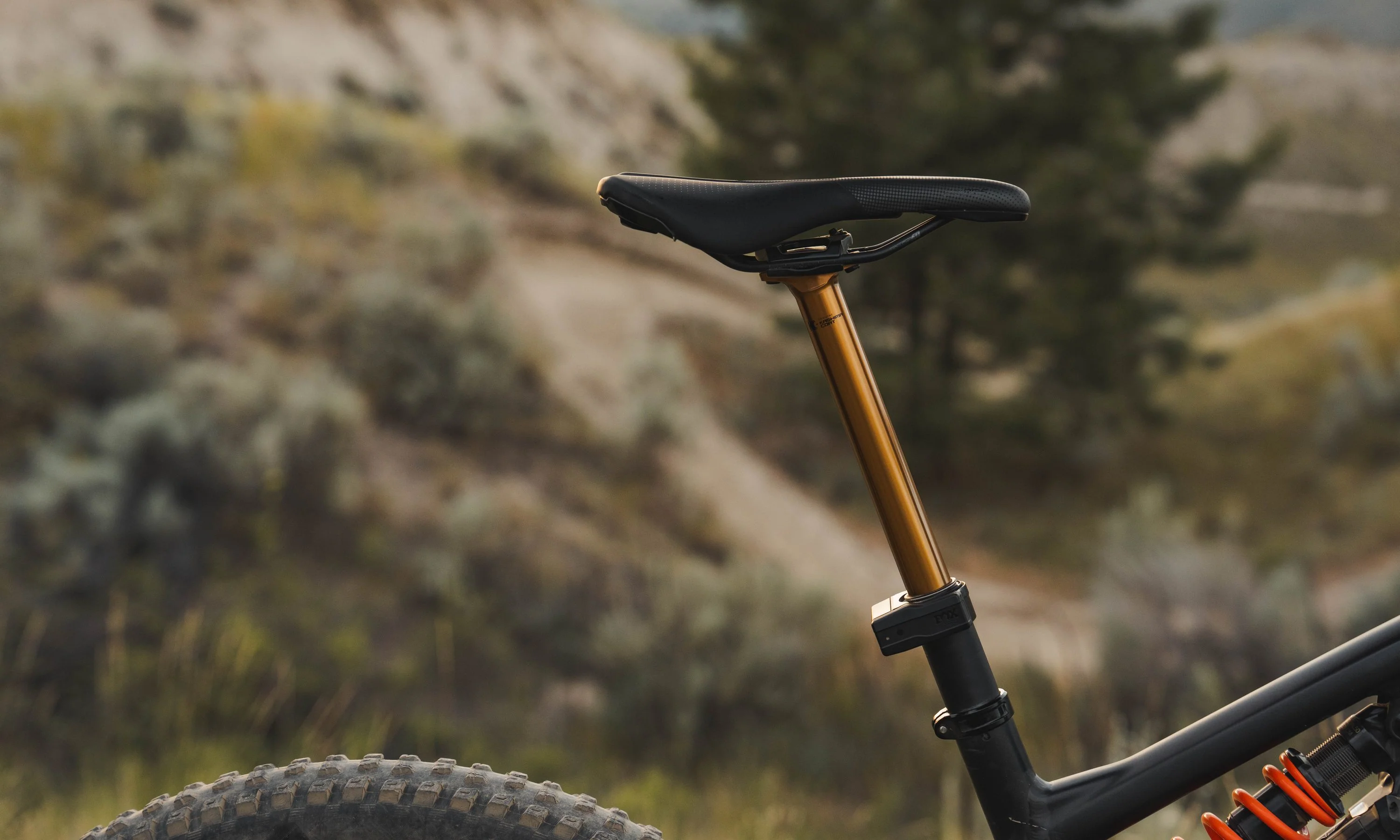 Braking is a funny skill. The worse you are at it, the more braking you do, and the worse your riding feels.
Braking is a funny skill. The worse you are at it, the more braking you do, and the worse your riding feels.
While you’re squeezing your brakes, your wheels can’t spin freely. When you brake in rocks, your front tire is likely to hang up and pitch you forward. When you brake in turns, your wheels are likely to wash out and put you down.
Based on my work teaching riding skills to thousands of mountain bikers, I will assume that you:
- Don’t know how to brake correctly. Sometimes your rear tire skids, and once in a while, you get thrown over the bars.
- Brake too much and in the wrong places. You drag your brakes down long downhills, and you panic and grab them in turns (oops, over the bars you go).
- Might have low confidence. You worry about controlling your speed. And you worry about going over your bars. Which you should.
These issues can be fixed!
1. Learn how to brake
The key to braking, and really all riding skills, is balance. Imagine a pendulum that hangs from your belly button, directly through your bike's bottom bracket, perpendicular to your cranks. As long as your weight is pressing into the middle of the bike, your wheels are both weighted, and you have great braking control, and you cannot be thrown over the bars.
Approach your braking point in a low hinge. Butt back, shoulders down. Weightless hands.
Gradually squeeze both levers. Gradually. Both.
While your pendulum starts to swing forward, rotate your entire body — from the cranks up — down and back. This aims your pendulum safely at your bottom bracket instead of unsafely at the front tire. 
Drop your heels. This is key. Drop your heels so the combined force of gravity and braking presses into your pedals. You know you’re doing this right when your hands stay weightless.
Brake hard. Really slow down.
Gradually release your brakes and return to your starting position. The entire sequence should be smooth and round, like a wave of deceleration love.

2. Brake at smart times
If the question is “When should I brake?” a good answer is, “Whenever you feel like you’re going too fast.”
An even better answer is “Before you feel like you’re going too fast.”
Brake before turns. How many times have you panicked in a turn then grabbed a fistful of Shimano? Yeah I know, me too. It’s essential that you enter turns at a speed that gives you the confidence and physical control to execute great cornering technique (see my post on how to corner). Slow way down before you turn. Slow down so much there’s no apprehension, and there’s zero chance you’ll panic and seize the levers.
Brake before gnarly sections. If you want to ride rollers, rocks, logs, roots, water bars and the like — well, you need to ride them at a speed you can handle. Slow way down. Slow down so much there's no chance a sudden panic will force you to jam on your brakes. If you can't slow down enough to ride with complete confidence, it's OK to walk the section.
Don’t brake in braking bumps. Braking bumps are caused by thousands of riders all braking in the same places — generally before turns — and, wow, they beat you up and make your bike hard to control. Option 1: Ride around the bumps. Option 2: Brake before the bumps, then coast through them. Option 3: Skim across the bumps at full speed then brake after them. There’s often space between the last braking bump and the beginning of the turn.
 3. Build confidence
3. Build confidence
When your inner lizard brain trusts that you know how to brake well and that you have the judgment to brake in smart places, it’s less likely to tell you to drag your brakes for extended periods. With confidence, you won't grab the brakes in the middle of turns and technical sections. 
The key to building confidence is some focused practice:
- Find a smooth area with good traction. Pavement and packed dirt work well.
- Get up to speed in your low, hinged ready position.
- Squeeze both brake levers gradually.
- As your weight pitches forward, rotate your body down and back so all the energy goes into your feet.
- Gradually release the brakes as you return to your ready position.
- As you get the hang of this, brake harder and harder and in increasingly shorter stopping distances.
Have fun out there!
—Lee
Lee McCormack is a world-renowned mountain bike skills author and instructor who's worked with thousands of riders of all styles and levels. You can learn way more from his books, online school, and classes. Check them out at www.leelikesbikes.com.



 3. Build confidence
3. Build confidence






















